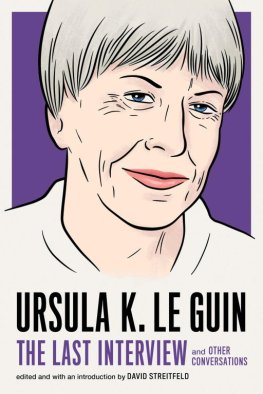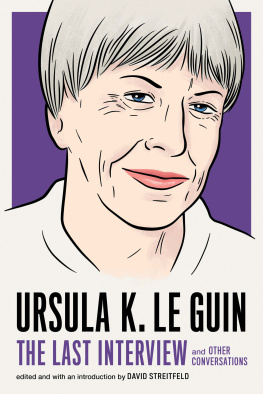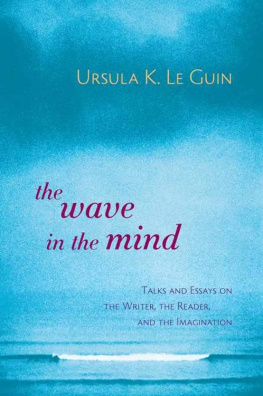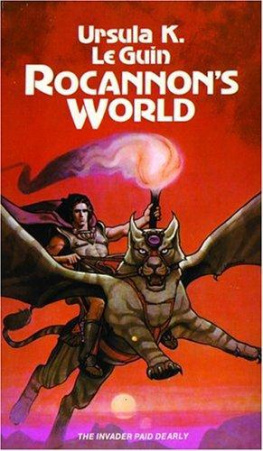Rocannon's world
by Ursula K. Le Guin
How can you tell the legend from the fact on these worlds that lie so many years away?planets without names, called by their people simply The World, planets without history, where the past is the matter of myth, and a returning explorer finds his own doings of a few years back have become the gestures of a god. Unreason darkens that gap of time bridged by our lightspeed ships, and in the darkness uncertainty and disproportion grow like weeds.
In trying to tell the story of a man, an ordinary League scientist, who went to such a nameless half-known world not many years ago, one feels like an archeologist amid millennial ruins, now struggling through choked tangles of leaf, flower, branch and vine to the sudden bright geometry of a wheel or a polished cornerstone, and now entering some commonplace, sunlit doorway to find inside it the darkness, the impossible flicker of a flame, the glitter of a jewel, the half-glimpsed movement of a woman's arm.
How can you tell fact from legend, truth from truth?
Through Rocannon's story the jewel, the blue glitter seen briefly, returns. With it let us begin, here:
Galactic Area 8, No. 62: FOMALHAUT II.
High-Intelligence Life Forms: Species Contacted:
Species I.
A) Gdemiar (singular Gdem): Highly intelligent, fully hominoid nocturnal troglodytes, 120-135 cm. in height, light skin, dark head-hair. When contacted these cave-dwellers possessed a rigidly stratified oligarchic urban society modified by partial colonial telephathy, and a technologically oriented Early Steel culture. Technology enhanced to Industrial, Point C, during League Mission of 252-254. In 254 an Automatic Drive ship (to-from New South Georgia) was presented to oligarchs of the Kiriensea Area corn-munity. Status C-Prime.
B) Fa (singular Fian): Highly intelligent, fully hominoid, diurnal, av. ca. 130 cm. in height, observed individuals generally light in skin and hair. Brief con~ tacts indicated village and nomadic communal societies, partial colonial telepathy, also some indication of short-range TK. The race appears a-technological and evasive, with minimal and fluid culture-patterns. Currently untaxable. Status E-Query.
Species 11.
Liuar (singular Liu): Highly intelligent, fully hominoid, diurnal, av. height above 170 cm., this species possesses a fortress/village, clan-descent society, a blocked technology (Bronze), and feudal-heroic culture. Note horizontal social cleavage into 2 pseudo-races: (a: Olgyior, "midmen," light-skinned and dark-haired; (b: Angyar, "lords," very tall, dark-skinned, yellow-haired
"That's her," said Rocannon, looking up from the Abridged Handy Pocket Guide to Intelligent Life-forms at the very tall, dark-skinned, yellow-haired woman who stood halfway down the long museum hall. She stood still and erect, crowned with bright hair, gazing at something in a display case. Around her fidgeted four uneasy and unattractive dwarves.
"I didn't know Fomalhaut II had all those people besides the trogs," said Ketho, the curator.
"I didn't either. There are even some "Unconfirmed" species listed here, that they never contacted. Sounds liketime for a more thorough survey mission to the place. Well, now at least we know what she is."
"I wish there were some way of knowing who she is"
She was of an ancient family, a descendant of the first kings of the Angyar, and for all her poverty her hair shone with the pure, steadfast gold of her inheritance. The little people, the Fa, bowed when she passed them, even when she was a barefoot child running in the fields, the light and fiery comet of her hair brightening the troubled winds of Kirien.
She was still very young when Durhal of Hallan saw her, courted her, and carried her away from the ruined towers and windy halls of her childhood to his own high home. In Hallan on the mountainside there was no comfort either, though splendor endured. The windows were unglassed, the stone floors bare; in coldyear one might wake to see the night's snow in long, low drifts beneath each window. Durhal's bride stood with narrow bare feet on the snowy floor, braiding up the fire of her hah: and laughing at her young husband in the silver mirror that hung in their room. That mirror, and his mother's bridal-gown sewn with a thousand tiny crystals, were all his wealth. Some of his lesser kinfolk of Hallan still possessed wardrobes of brocaded clothing, furniture of gilded wood, silver harness for their steeds, armor and silver-mounted swords, jewels and jewelry-and on these last Durhal's bride looked enviously, glancing back at a gemmed coronet or a golden brooch even when the wearer of the ornament stood aside to let her pass, deferent to her birth and marriage-rank.
Fourth from the High Seat of Hallan Revel sat Durhal and his bride Semley, so close to Hallanlord that the old man often poured wine for Semley with his own hand, and spoke of hunting with his nephew and heir Durhal, looking on the young pair with a grim, unhopeful love. Hope came hard to the Angyar of Hallan and all the Western Lands, since the Starlords had appeared with their houses that leaped about on pillars of fire and their awful weapons that could level hills. They had interfered with all the old ways and wars, and though the sums were small there was terrible shame to the Angyar in having to pay a tax to them, a tribute for the Starlord's war that was to be fought with some strange enemy, somewhere in the hollow places between the stars, at the end of years. "It will be your war too," they said, but for a generation now the Angyar had sat in idle shame in their revelhalls, watching their double swords rust, their sons grow up without ever striking a blow in battle, their daughters marry poor men, even midmen, having no dowry of heroic loot to bring a noble husband. Hallanlord's face was bleak when he watched the fair-haired couple and heard their laughter as they drank bitter wine and joked together in the cold, ruinous, resplendent fortress of their race.
Semley's own face hardened when she looked down the hall and saw, in seats far below hers, even down among the halfbreeds and the midmen, against white skins and black hair, the gleam and flash of precious stones. She herself had brought nothing in dowry to her husband, not even a silver hairpin. The dress of a thousand crystals she had put away in a chest for the wedding-day of her daughter, if daughter it was to be.
It was, and they called her Haldre, and when the fuzz on her little brown skull grew longer it shone with steadfast gold, the inheritance of the lordly generations, the only gold she would ever possess
Semley did not speak to her husband of her discontent. For all his gentleness to her, Durhal in his hard lordly pride had only contempt for envy, for vain wishing, and she dreaded his contempt. But she spoke to Durhal's sister Durossa.
"My family had a great treasure once," she said. "It was a necklace all of gold, with the blue jewel set in the centersapphire?"
Durossa shook her head, smiling, not sure of the name either. It was late in warmyear, as these Northern Angyar called the summer of the eight-hundred-day year, beginning the cycle of months anew at each equinox; to Semley it seemed an outlandish calendar, a midmannish reckoning. Her family was at an end, but it had been older and purer than the race of any of these northwestern march-landers, who mixed too freely with the Olgyior. She sat with Durossa in the sunlight on a stone windowseat high up in the Great Tower, where the older woman's apartment was. Widowed young, childless, Durossa had been given in second marriage to Hallanlord, who was her father's brother. Since it was a kinmarriage and a second marriage on both sides she had not taken the title of Hal-lanlady, which Semley would some day bear; but she sat with the old lord in the High Seat and ruled with him his domains. Older than her brother Durhal, she was fond of his young wife, and delighted in the bright-haired baby Haldre.









